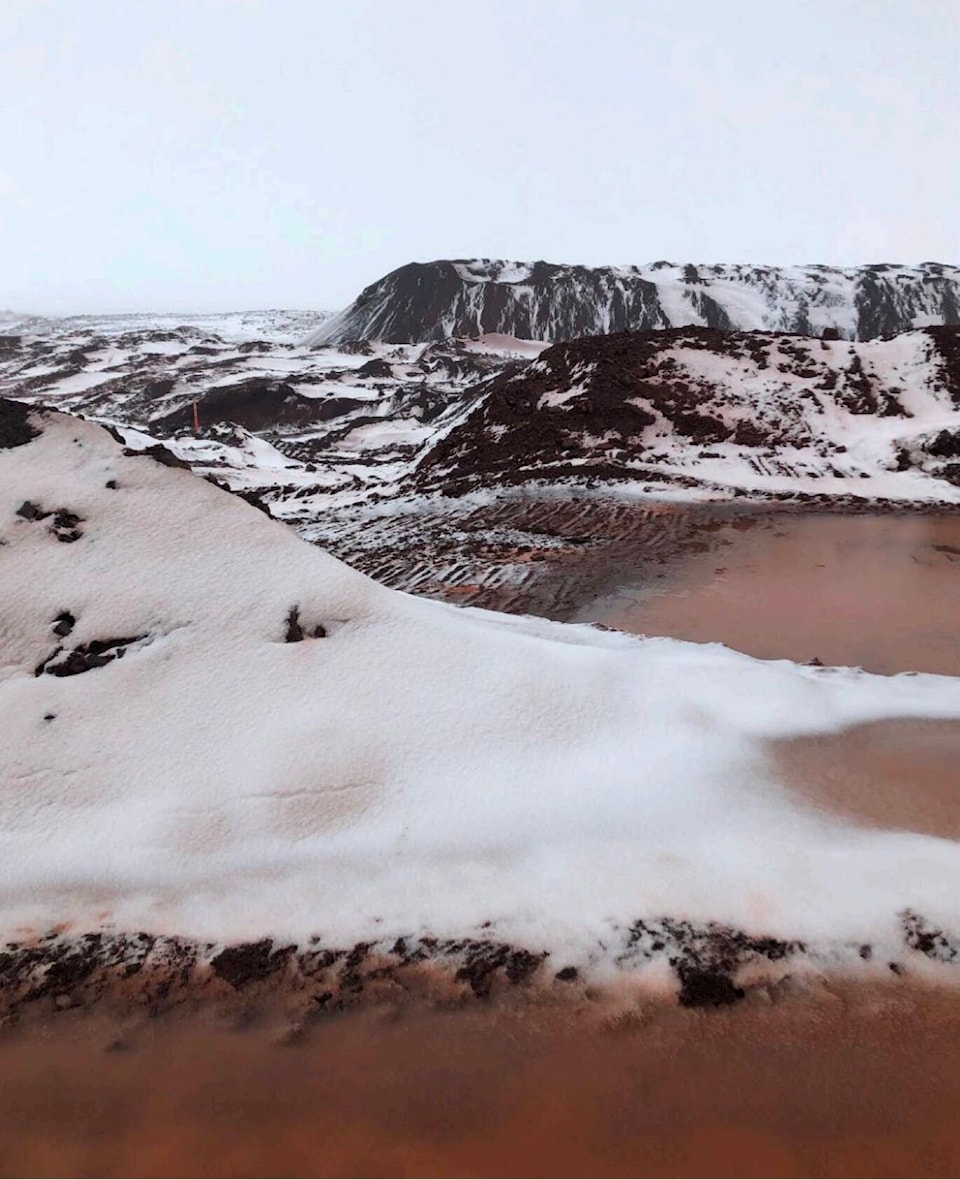Controversy surrounding dust from the Mary River iron mine on Baffin Island has swirled for several years.
Some local hunters and campers reported to various media outlets that they were concerned about the “blood red” dust from iron ore extraction that coats animals, the nearby ground and water, and potentially contaminates the environment, which may deter animals from their natural migration patterns.
In response to the outcry, Baffinland Iron Mines agreed to a Dust Audit Committee to “resolve outstanding issues… including dust-related issues” and invited five communities to participate: Clyde River, Arctic Bay Sanirajak, Iglulik and Pond Inlet, which is the nearest community to the site, approximately 160 km away.
A subsequent study was titled “Mary River Mine Fugitive Dust Research: Bridging Western Science, Industry Monitoring and Inuit Qaujimajatuqangit.”
According to Peter Akman, the head of stakeholder relations and communications at Baffinland, “The Dust Audit Committee, which is funded by Baffinland but administered by an independent contractor, is comprised of HTA [hunters and trappers association] and hamlet members from the five communities.”
A Feb. 8, 2023 report prepared by Nunami Stantec Limited and the Dust Audit Committee, stated that “the Dust Audit Committee was pleased that this scope of work will continue and looks forward to future discussions with Baffinland… The Dust Audit Committee has researched, reviewed and endorsed the recommendations outlined in this report for Baffinland’s implementation… this committee will continue to provide ongoing evaluations of the effectiveness of current dust mitigation measures as well as provide further options to reduce the spread and impacts of dust from various activities… the committee has reiterated the importance of Baffinland listening to Inuit voices and the concerns identified.”
Akman said, “The report contained a number of recommendations, which Baffinland is integrating into its operations and future developments, such as blasting, dust fall monitoring and dust suppression technology.
Philippa Huntsman, one of the Natural Resources Canada (NRCan) staff working on a separate dust study, said her team’s project was motivated by “a combination of hearing, through local media reports and other sources, about the community concerns about dust on the land. We had also learned of the limitations that the mining industry faces with respect to dustfall monitoring in the Arctic environment. We felt that with our experience working on other mine dust projects across Canada that we could bring some new perspectives to eventually develop a toolbox of dust monitoring techniques for fugitive mine dust monitoring in Canada’s Arctic.
“By evaluating innovative methodologies for mine dust monitoring against current industry monitoring in this challenging environment, we hope to address both community concerns and industry challenges in monitoring fugitive mine dust,” Huntsman added. “To achieve this goal, we plan to leverage Western science, Baffinland’s current dust monitoring data, and Inuit Qaujimajatuqangit (IQ) towards a holistic understanding of the subject.”
Work with the partners and the monitoring process
Huntsman said her team started to engage with communities, government departments and Baffinland Iron Mines in 2020 and had its first face-to-face meetings with community members in Pond Inlet in December 2022. A visit to the Mary River mine followed in April 2023.
“We just recently received our Nunavut scientific research licence and have our first field campaign scheduled for April 2024. We have designed this current project as a three-year study, with two full years of field collection and one year for data analysis and write-up… Prior to the development of the proposal, we met with community members to hear their observations of dust on the land and to listen to their questions and concerns about dust. We held a workshop in Pond Inlet, facilitated by Ikaarvik [a non-profit organization for Indigenous youth], to help in the formulation of the research questions, resulting in a community-driven research approach. All opportunities to explore employment, contracting, education and capacity building will be prioritized and integrated into the research when feasible.
Huntsman mentioned that Baffinland has “been supportive of our project and are interested in working with us to develop this project… they have shared information on their existing dustfall monitoring programs and will be providing us with logistical support for our fieldwork. It has always been our objective to develop this project as a tri-lateral initiative with NRCan working with both the communities and Baffinland.”
Baffinland, according to Akman, is “currently in the program planning stage with NRCan and our experience to date has been very positive. Baffinland regularly engages with North Baffin communities and has done so for a number of years through the regulatory process and through the onset of the Dust Audit Committee to discuss mitigation efforts and solicit feedback.”
The mining company expects the 2023 Dust Audit Report to be released in April 2024.
“Baffinland expects to respond to any recommendations it contains, similar to our response to the 2022 Dust Audit Report,” said Akman. “Recommendations will be adopted as proposed, or modified to ensure they are feasible from a technical, financial and environmental perspective.
“The NRCan program is still in the planning phase with fieldwork planned for later in 2024 at the Mary River site. Baffinland expects the report to focus on the feasibility of using the new passive air sampler technology and, at that time, may consider adopting the technology into our existing air quality monitoring program.”
When asked why Natural Resources Canada, Baffinland and the Dust Audit Committee acted independently of each other, Akman replied, “They are doing research that covers their jurisdictions and areas of interest. We are pleased to collaborate with them as the situations permit.”
Huntsman added, “By involving community members and Baffinland in the development and implementation of the project, we are better able to understand their concerns and challenges presented by fugitive dust in this environment, and how our expertise can aid in providing additional tools to better inform all parties on this subject.”
